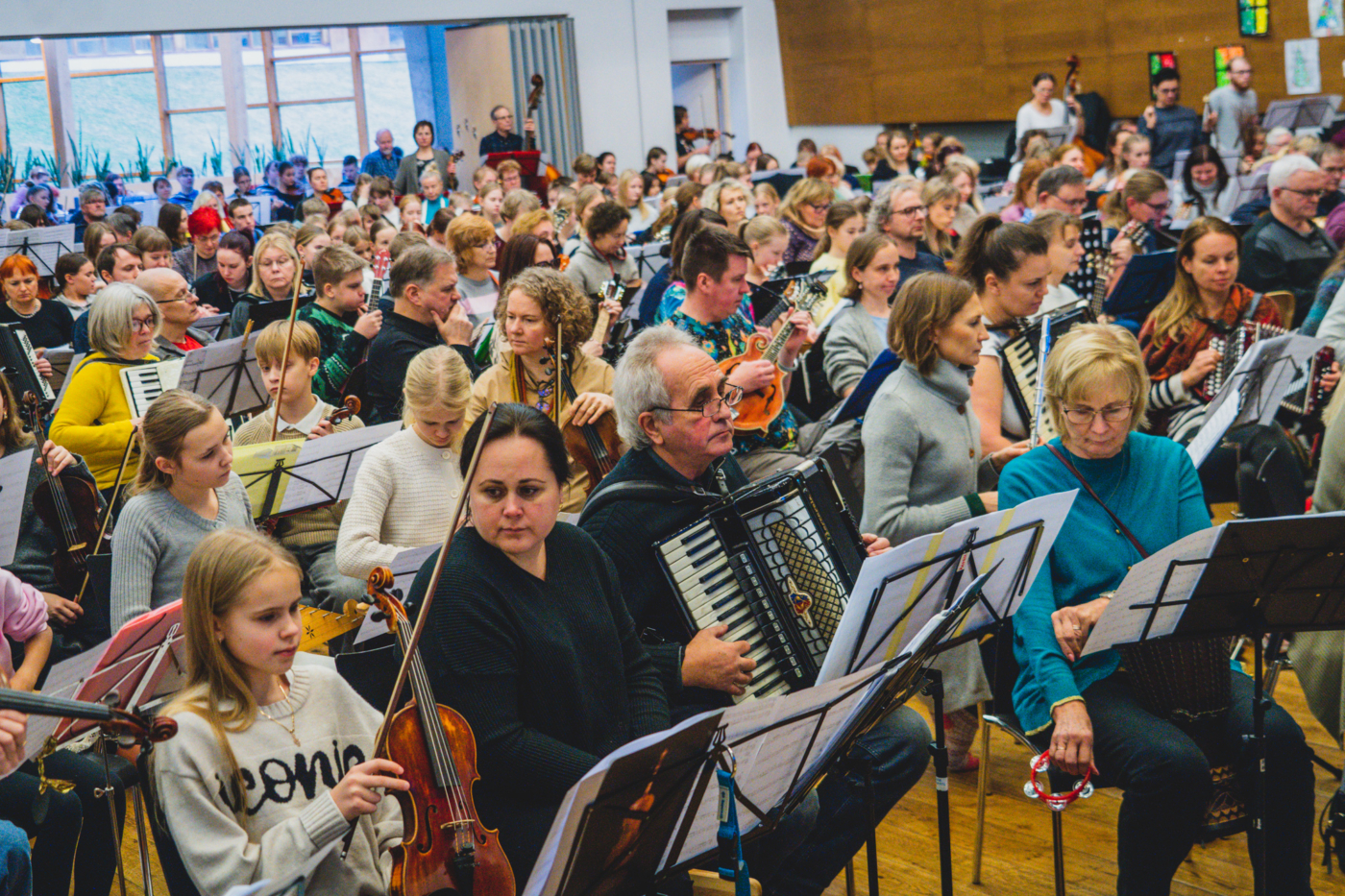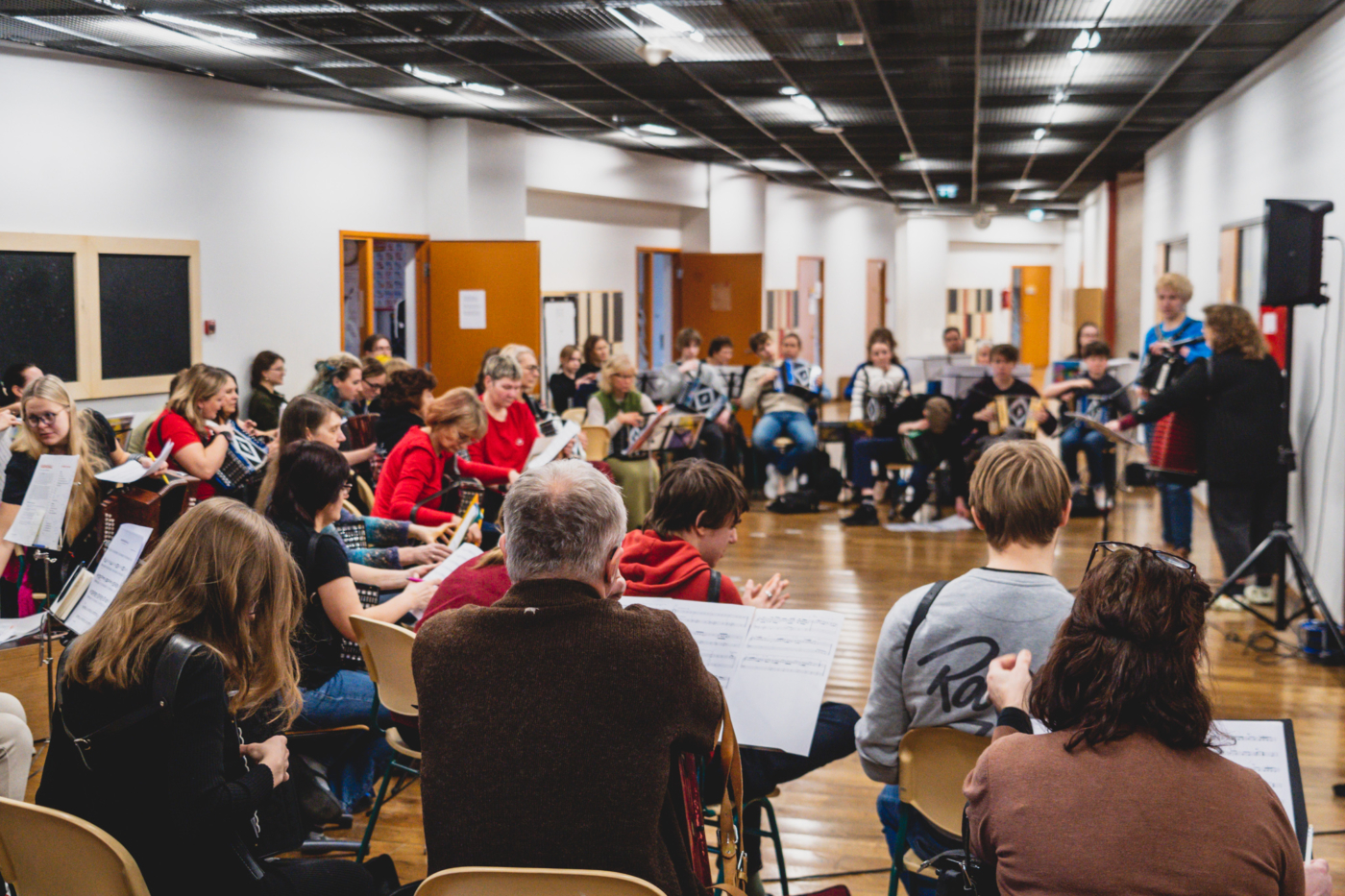The Song Festival Year Has Officially Begun with January, and the First Rehearsals Are Underway
The first pre-rehearsals for the Folk Music Festival took place on January 25 in Tallinn and January 26 in Tartu. To understand how folk musicians’ journey has progressed so far, we asked them directly.
According to the artistic director of the Folk Music Festival, Helin Pihlap, there was great excitement leading up to the rehearsals—especially for those instrument groups participating for the first time. For the first time in the festival’s history, mandolins, diatonic accordions (karmoškas), and Hiiu kanteles (a type of bowed lyre) have their own dedicated groups. “Another special aspect is that each group’s program includes a soloist piece, and I’m very pleased that all the soloists participated in the rehearsals and greatly valued the opportunity to meet and play together,” Pihlap added.
Preparation for the pre-rehearsals has mostly been independent for both solo players and ensembles. However, workshops have been organized for both instructors and musicians. Learning materials—including sheet music, recordings, videos, and guides—have also been provided. Pihlap has been invited to visit folk music groups in Järva County, as well as in eastern and western Virumaa, and other section leaders have also visited various groups. She also highlighted that the Hiiu kantele group, which consists of many solo players, has held regular meetings, and bagpipers have organized joint training sessions.

Hiiu Kantele Ensemble – A Unique Experience
Hiiu kantele player Lydia Kalda, who is preparing to perform as a soloist at the festival, fondly recalled the ensemble’s rehearsals. Kalda works at the Coastal Swedes Museum in Haapsalu, where two of the rehearsals have been hosted. “Since our museum doesn’t have a hall big enough for the entire orchestra, we had to move all the furniture out before rehearsals,” she described. The Hiiu kantele ensemble had previously gathered in July 2024 at Haapsalu Episcopal Castle, where they were led by their section leader, Liisa Koemets. “This time, we had 40 Hiiu kantele players, so Liisa is already familiar with leading a large ensemble. She guided us wonderfully,” Kalda praised Koemets.
Being part of the festival for the first time is a source of great pride for Kalda. “It’s an amazing feeling, truly amazing,” she said. “I believe that the world’s largest Hiiu kantele orchestra will definitely gain international attention.”
The same enthusiasm is shared by the Karmoškaässad (Accordion Aces) ensemble from the MODUS Dance and Culture House: “Having a separate section allows diatonic accordion players to participate in the festival, even if they don’t play other instruments at the required level.”
Mandolins Join the Festival for the First Time
The third newly introduced section is for mandolins. Hans Mihkel Vares, a musician who initially planned to participate in three different groups— the main orchestra, mandolins, and violins—decided to drop the violin section but will still perform with the main orchestra and mandolin group. “It’s great that mandolins have their own section, and I think this will bring more attention to the instrument and inspire new players. There may even be participants who picked up the mandolin for the first time just to join this section,” he said. Notably, Vares has arranged a piece titled Põltsamaa Waltz for the mandolin group.

A Collective Effort for a Common Goal
Richard Ott Leitham, a preparatory instructor at the Tallinn Accordion Club, summed up the preparation process well: “Preparing for the Folk Music Festival is definitely different from our usual gatherings. Normally, each musician adapts a piece to their own style, but when playing together, there’s less room for variation. However, this doesn’t make the result dull—quite the opposite.”
He pointed out that, as with learning any new piece, there are moments when everything seems correct, yet something still feels off. But for him, this is not an obstacle, as accordion players form a tight-knit community. “It’s all driven by passion. The amount of effort each person puts in is reflected in the final result. If someone struggles at first, we help them catch up and wait for them,” Leitham explained. “After all, we all share the same goal—to learn the pieces and make it to the festival!”
Author: of Estonian version: Karina Agnes Raudkats